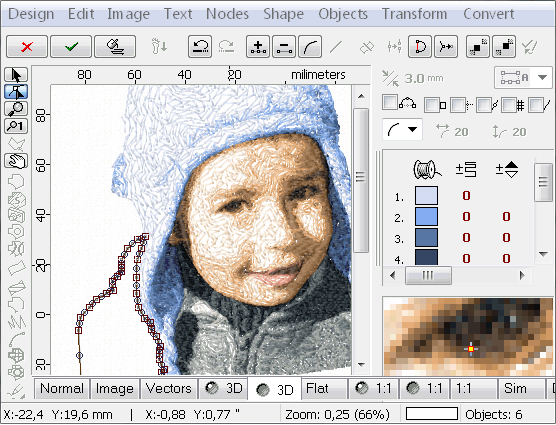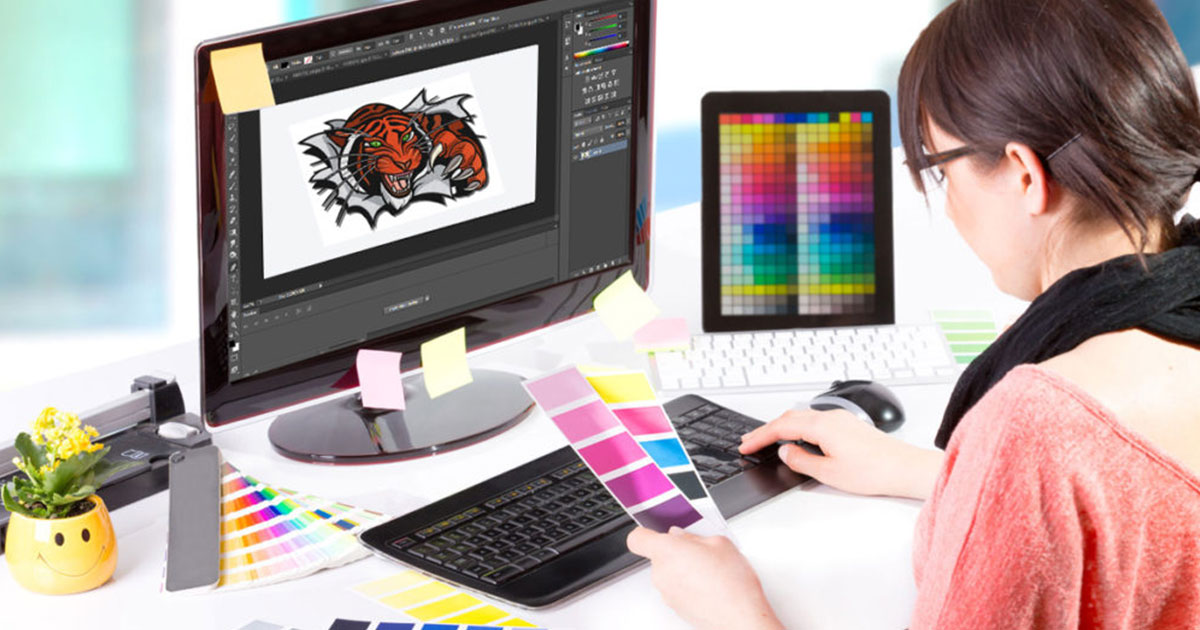Reputable Digitizing for Embroidery: Trusted by Professionals
Reputable Digitizing for Embroidery: Trusted by Professionals
Blog Article
Simplifying the Art of Embroidery Digitizing: Step-by-Step Overview
As modern technology continues to advance, the digitization procedure has come to be a lot more easily accessible, allowing lovers to bring their intricate layouts to life with ease. In this overview, we will unwind the intricacies of embroidery digitizing, damaging down each step carefully to improve the procedure and empower both novices and seasoned embroiderers alike.
Comprehending Embroidery Digitizing Software Application
Needlework digitizing software functions as a vital tool for changing detailed styles into digital styles compatible with needlework devices, promoting specific stitching and customization. This specific software program permits users to import different photo data layouts, such as JPG or PNG, and convert them into embroidery machine-readable styles like DST, EXP, or PES - Digitizing for Embroidery. By making use of features like stitch modifying, rug choices, and thread color choice, digitizing software program enables users to manage every element of the style procedure
Moreover, advanced embroidery digitizing software provides tools for producing intricate layouts, adjusting stitch density, and incorporating elaborate details. Users can also preview the design before stitching it out, guaranteeing accuracy and lessening errors. Furthermore, numerous software application supply automatic attributes that aid simplify the digitizing procedure, conserving effort and time.
Comprehending the abilities of embroidery digitizing software application is necessary for attaining high-grade lead to needlework jobs. By mastering this device, needlework fanatics and experts can release their creative thinking and bring complex styles to life with precision and performance.

Choosing the Right Style Data
After acquainting yourself with the abilities of embroidery digitizing software program, the following critical action in the process is choosing the best design declare your task. Digitizing for Embroidery. When selecting a style file for embroidery digitizing, it's necessary to consider the intricacy of the style, the size of the last item, and the sort of fabric you will certainly be collaborating with
For elaborate designs with fine information, a high-resolution photo or vector data is recommended to make certain that the needlework device can properly recreate the style. Furthermore, the dimension of the end product plays a substantial function in selecting the ideal design documents. Bigger designs might require greater resolution files to keep clearness and sharpness.
In addition, the kind of textile you will certainly be embroidering on affects the option of design file. Various materials may need adjustments in the style file to make sure that the stitches are appropriately aligned and the style appears as planned. By carefully selecting the ideal layout documents based on these aspects, you can set on your own up for a successful embroidery digitizing process.
Digitizing Devices and Methods
Using specialized software program and accuracy strategies, digitizing tools are important in changing intricate styles right into embroidery-ready documents. Needlework digitizing software, such as Wilcom, Hatch, or Embrilliance, gives the essential system to transform art work into stitch information. These programs offer functions like stitch editing and enhancing, padding moved here choices, and check this text devices to guarantee the design converts seamlessly onto material.
Among the key strategies in digitizing is creating a clear path for the embroidery device to comply with. This includes digitizing each aspect of the style with precision, establishing stitch types, densities, and instructions. By using tools like digitizing tablet computers or software-specific plugins, embroiderers can accomplish a high level of precision in their digitized styles.
Additionally, mastering the art of padding sewing is essential for producing quality needlework. Underlay stitching stabilizes the material and creates a structure for the design, making sure that the last item is both aesthetically enticing and resilient. By comprehending these digitizing devices and strategies, embroiderers can raise their craft and bring intricate layouts to life with accuracy and efficiency.
Customizing Stitch Types and Instructions
The option of stitch types can dramatically affect the overall look and texture of the stitched style. By strategically integrating these stitch kinds, embroiderers can attain deepness and measurement in their layouts.
Furthermore, the direction of stitches plays a vital duty in improving the aesthetic allure of the final needlework. By experimenting with various stitch angles and patterns, embroiderers can bring their layouts to life with amazing information and ins and out.
Testing and Refining Your Digitized Style
To make certain the accuracy and high quality of your digitized design, complete testing and improvement are important actions in the embroidery digitizing process. When you have actually completed the digitization of your layout, it is vital to test it before waging the real embroidery. Examining allows you to recognize any type of possible problems such as thread breaks, stitch thickness troubles, or layout distortions that may influence the final result.

After testing, it is important to fine-tune your digitized design based upon the comments from the examination sew-out. This may entail tweaking sew setups, readjusting thickness, or making changes to the total style to achieve the desired outcome. By iterating through screening and refinement, you can tweak your digitized design to excellence prior to moving on with the real needlework process.
Verdict
In final thought, mastering the art of needlework digitizing requires a detailed understanding of the software application, choosing the appropriate design data, using digitizing devices and strategies, tailoring stitch kinds and directions, and screening and improving the digitized layout. By complying with these steps, embroiderers can simplify the digitizing procedure and develop premium embroidered designs with accuracy and performance.
Report this page